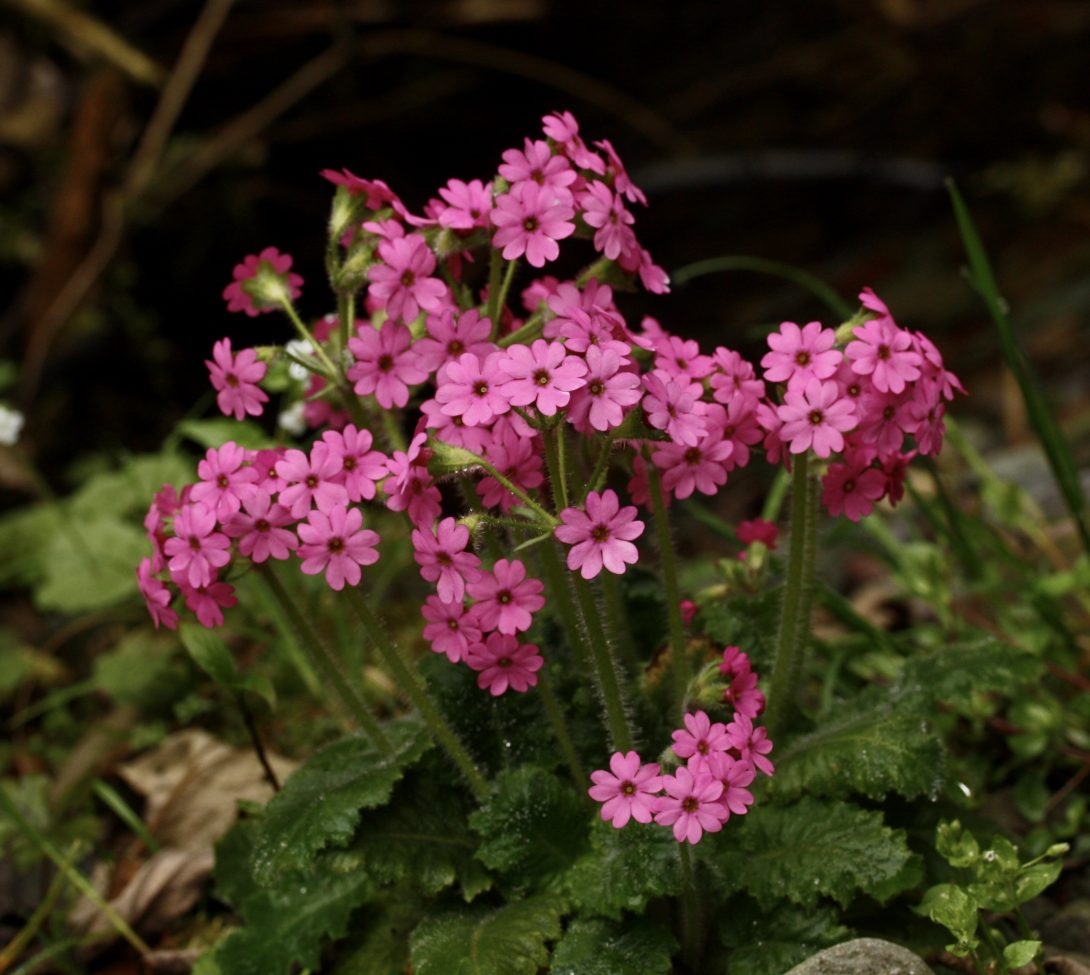Continuing in the Darwin tradition – Spencer Barrett and mating-system evolution in a Chinese Primrose
In Spring 2022, University Professor Emeritus Spencer Barrett of EEB was inducted into the National Academy of Sciences, USA. Newly-elected academy members are given an opportunity to publish an “Inaugural Article” in Proceedings of the National Academy of Sciences, following peer review.

Photo credit: Shuai Yuan
Spencer’s article appeared recently and describes a study conducted in Sichuan Province, China on a wild primrose (Primula oreodoxa, Fig. 1). The genus Primula was made famous by Charles Darwin, who wrote the influential book “Forms of Flowers” featuring species that possess the fascinating sexual polymorphism referred to as heterostyly. Although P. oreodoxa is distylous (Fig. 2) earlier work suggested that the polymorphism was breaking down resulting in striking variation in floral traits and mating patterns among populations. Because the species is distributed along elevation gradients in sub-alpine habitats it provided a rare opportunity to investigate the ecology of microevolutionary change in mating systems. The research was a collaboration between Spencer, his long-term colleague Professor Lawrence Harder from the University of Calgary, and a team from South China Botanical Garden, Guangzhou led by Dr. Shuai Yuan (Fig. 3).

Photo credit: Shuai Yuan
The PNAS paper provides compelling evidence of an evolutionary transition within a species – from outcrossing to selfing – associated with elevation-driven changes in the pollination environment of populations. The research highlights the key role that ecological context can play in promoting evolutionary divergence caused by changes in the quantity and quality of pollinators visiting populations and their influence on mating patterns.

PNAS regularly publishes “Profiles”, which are short biographical sketches of academy members and their career paths, influences and scholarly contributions. A profile of Spencer appeared this week in the journal written by the science journalist Beth Azar. It describes his early experiences growing up as a keen naturalist in the UK, botanical adventures in Swaziland and Brazil, graduate work at University of California, Berkeley and his move to the University of Toronto in 1977 and subsequent research over the past 45 years. As the article makes clear, Spencer is still passionate about floral diversity and he and post-doc Alice Fairnie are currently working in the western Cape of South Africa on the evolution of mirror-image flowers funded by the Human Frontiers Scientific Program.
PNAS Profile of Spencer C.H. Barrett (download PDF)
PNAS Inaugural Article (download PDF)
